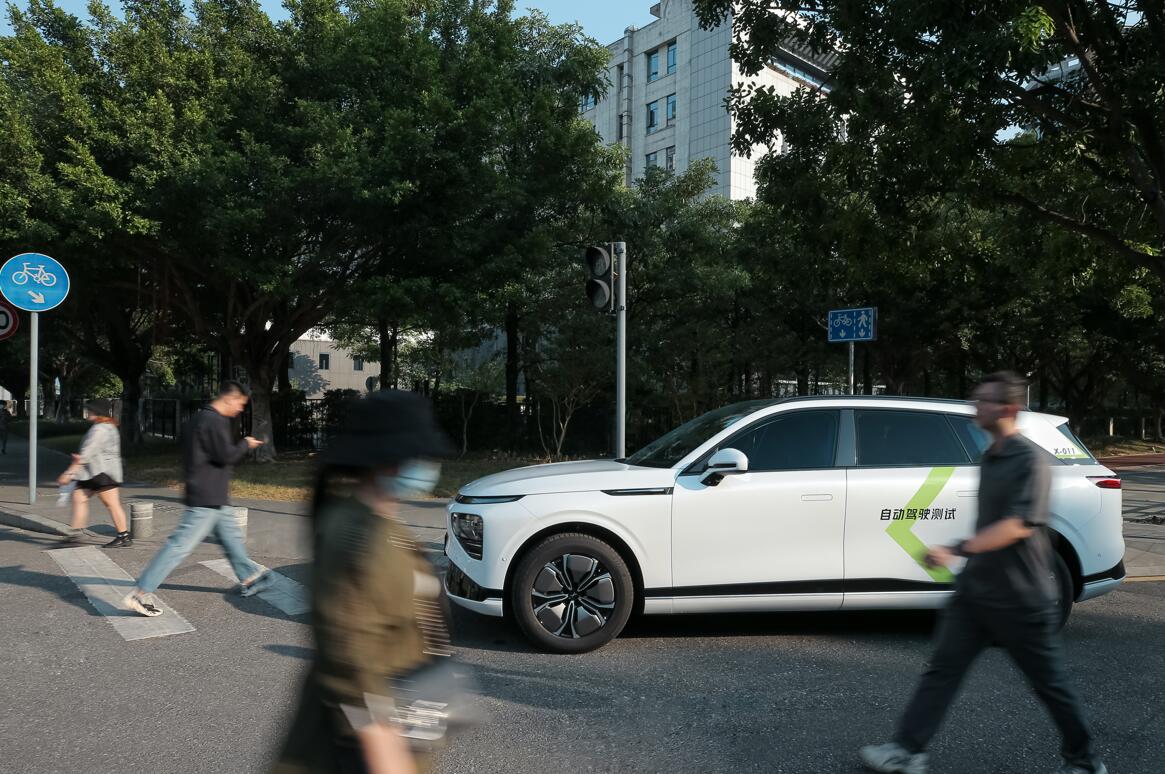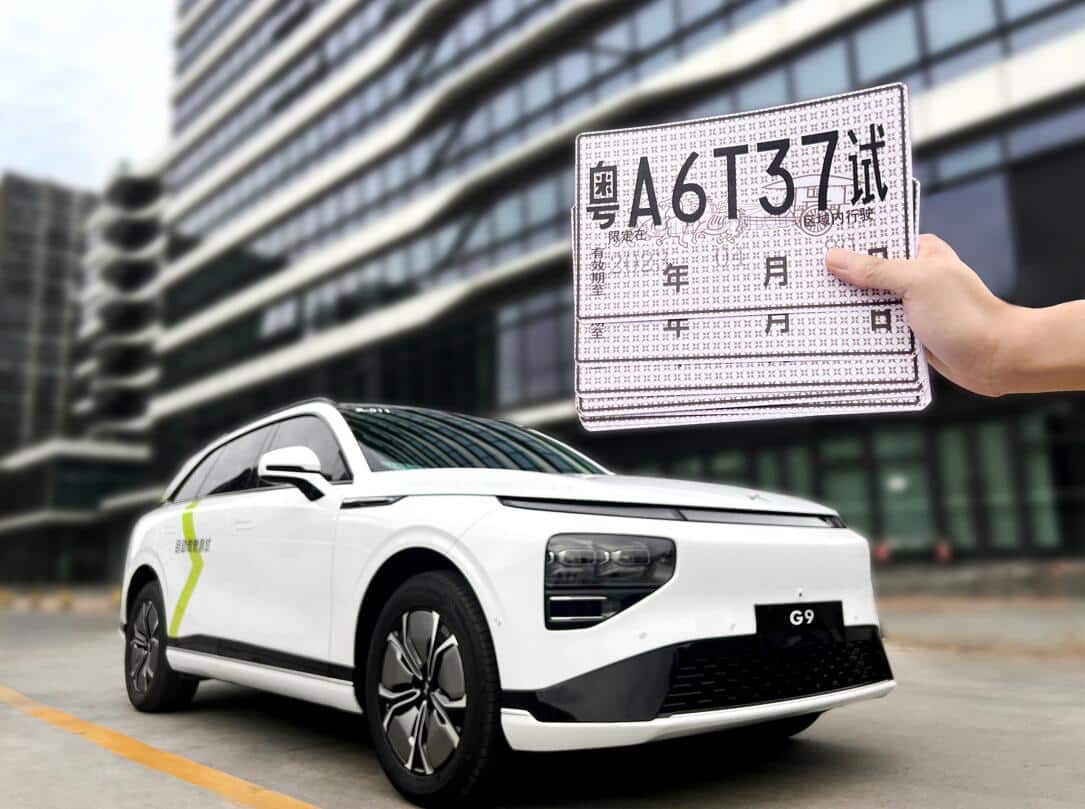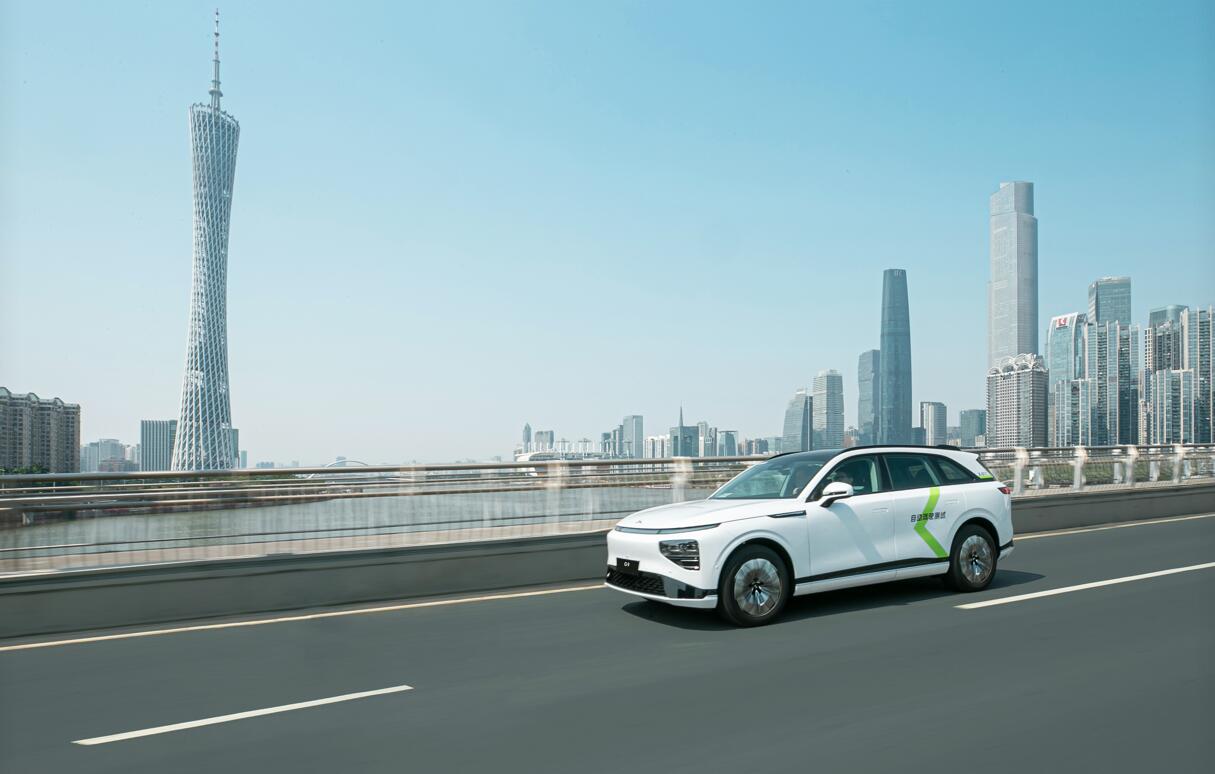The G9 becomes the first unmodified commercial vehicle to qualify for autonomous driving testing on designated public roads in China, laying the groundwork for Xpeng's exploration of the robotaxi field.
(Image credit: Xpeng)
Xpeng Motors' flagship SUV, the G9, has received the permit for autonomous driving public road testing in Guangzhou, where the company is headquartered, marking a major milestone in its exploration of the robotaxi sector.
Xpeng said Tuesday it officially received the permit on October 31, making the G9 the first unmodified commercial vehicle to qualify for autonomous driving tests on designated public roads in China.
The achievement marks an important industry milestone on the road to mass production of robotaxis and the future commercialization of robotaxi as a service.
The Xpeng G9 was officially launched on September 21, and first deliveries to the general public began on October 27. The company released figures yesterday showing it delivered 5,101 vehicles in October, including 623 G9s.
Getting the permit is significant for Xpeng and for China's autonomous driving industry, as the model is the first to get the green light without any hardware reconfiguration but only software upgrades.
Until now, the common robotaxi test vehicles in China have been retrofitted from existing models and typically have a visible device on the roof to house sensing elements, including LiDAR.
The G9 autonomous driving road test vehicle uses the same hardware suite as the G9 commercial vehicle, including sensors for sensing, computing and vehicle control systems, according to Xpeng.
"Our approach by using mass-produced commercial vehicles to explore mobility solutions will build a strong foundation to realize economies of scale. Significant cost efficiency brings us another step closer to commercializing robotaxis in the future," said Wu Xinzhou, vice president of Autonomous Driving Center at Xpeng.
Xpeng said it expects to leverage its platform-based technology stack to generate synergies as it combines advanced driver assistance systems (ADAS) with machine learning-based autonomous driving training models to accelerate software iterations through closed-loop data feedback.
Xpeng is the first of the new Chinese carmakers to explore the robotaxi space, as the company looks to find new ways to commercialize its autonomous driving technology.
To support these efforts, the company has joined forces with Alibaba Cloud to build Fuyao, China's largest computing center for self-driving model training in Ulanqab, Inner Mongolia.
The computing center is based on Alibaba Cloud's intelligent computing platform and has a total computing power of 600 PFLOPS, boosting the training speed of Xpeng's core autonomous driving models by 170 times, Xpeng said on August 2.
"As the demand for self-driving simulation training changes, we need a robust local and cloud-based computing power to provide support," Xpeng Chairman and CEO He Xiaopeng previously said.
Fuyao is currently being used to train algorithmic models for Xpeng's City NGP (Navigation Guided Pilot), Xpeng said in August, adding that traffic conditions on urban sections are more complex compared to highways, and that the dataset size for autonomous driving corner cases has increased hundreds of times.
With Fuyao's support, Xpeng has built XNet, a next-generation neural network-based perception architecture that uses Xpeng's in-house developed deep neural network for visual recognition with human-like decision-making capabilities, the company said at its Tech Day event on October 24.
The neural network technology replaces complex manual processing logic and enables self-evolving, data-driven algorithms, Xpeng said last week.




